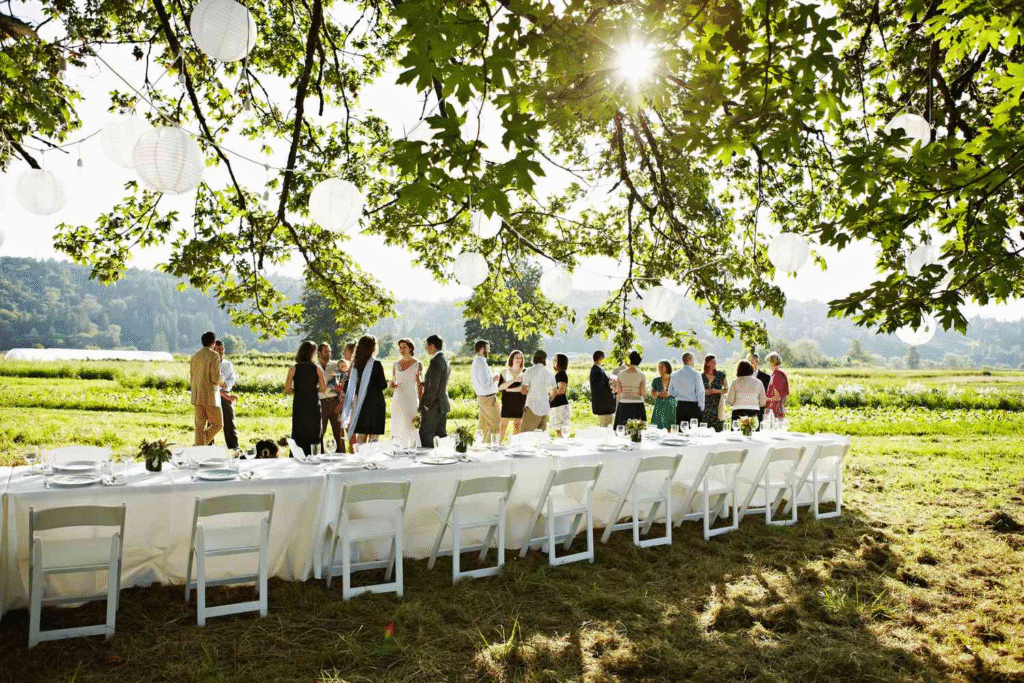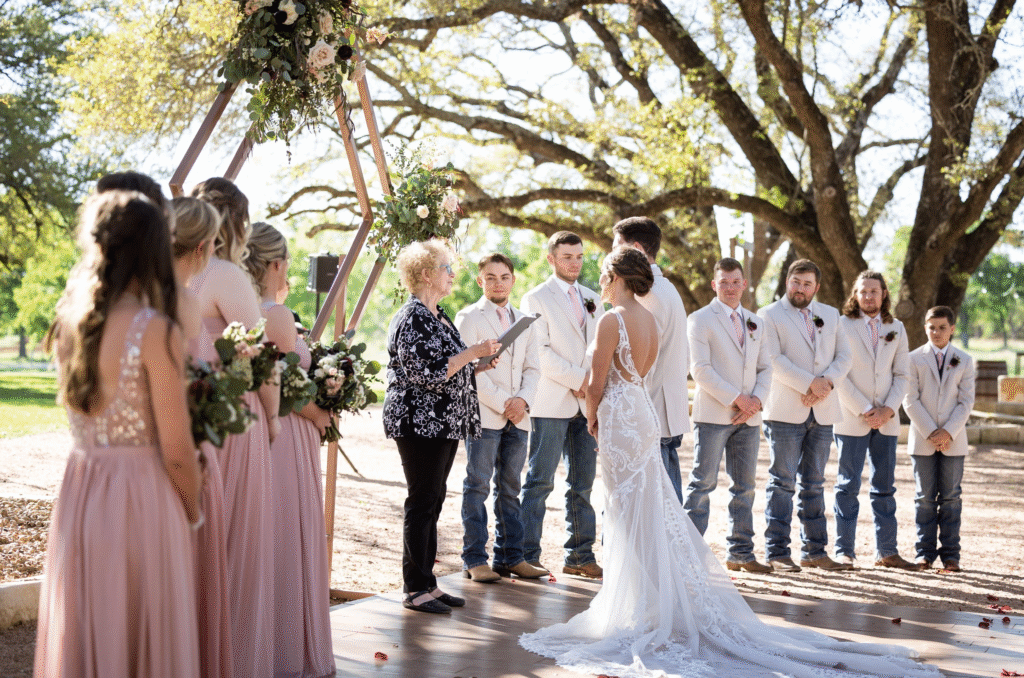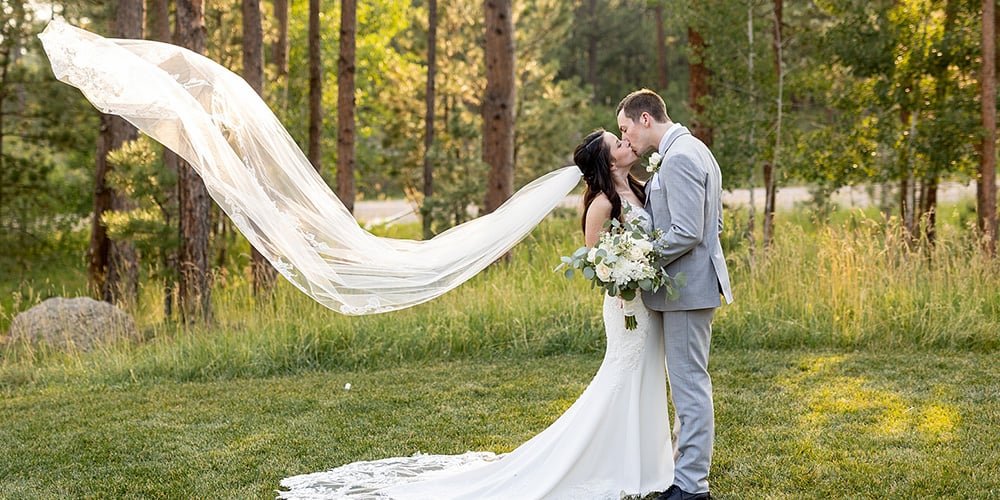Your wedding day is one of the most important days of your life, and while you can control almost every detail—from the flowers to the seating chart—the weather remains unpredictable. Rain, wind, extreme heat, or even unexpected snow can throw a wrench into even the most meticulously planned celebration.

But though you can’t dictate the weather, there are steps you can take when choosing your wedding date to increase the likelihood of ideal conditions. In this tutorial, we’re going to discuss:
How to study past weather trends
Regional weather hazards throughout the U.S.
Professional-approved methods for reducing weather-induced stress
Contingency plans for uncooperative weather
We’ve spoken with meteorologists and wedding planners to bring you the most accurate guidance—so you can vow “I do” with confidence, rain or shine.
Why Weather Matters More Than You Think
It’s common for couples to believe that using an indoor facility shuts out bad weather, but it’s not completely the case. Even if the ceremony and reception are held indoors, inclement weather may still:
Interrupt travel arrangements (flights running late, hazardous roads)
Impact outdoor photos (wind, rain, or blistering heat)
Make guest comfort an issue (outdoor cocktail parties, travel)
Add last-minute expenses (tents, heaters, canopies)
As Cheryl Nelson, a meteorologist and wedding planner, observes, “Couples often underestimate how much weather affects logistics—not the ceremony itself, but hair, makeup, photography, and guest experience.”
The Perfect Wedding Weather (By the Numbers)
While “perfect weather” is relative to individual tastes, surveys and research indicate that most couples like:
Temperature: 70–75°F (21–24°C)
Low humidity (less than 60%)
Minimal wind (less than 10 mph)
Clear skies (or light cloud coverage)
Of course, these situations aren’t always a sure thing—but with proper research, you can increase your chances.
Step 1: Research Historical Weather Data
Where to Find Credible Climate Data
NOAA (National Oceanic and Atmospheric Administration) – Offers long-term climate data.
WeatherSpark – Displays temperature, precipitation, and wind patterns for any location.
U.S. Climate Data – Diversifies averages by month and city.
Andrew Leavitt, a concierge event meteorologist, recommends: “View the last 30 years of history, not last year’s weather. This provides you with a realistic expectation of what’s normal.”

Key Figures to Review
Factor What to Check
Rainfall Months with least precipitation
Temperature Avoid extremes of highs/lows
Wind Weather areas usually have stronger winds
Severe Weather Hurricane season, wildfire hazards, etc.
Sample: If you are having a beach wedding in Florida, September (peak hurricane season) is riskier than April (blessed with milder weather).
Step 2: Learn Regional Weather Risks
Weather ranges significantly across the U.S. Here’s what to anticipate in various regions:
Northeast (New York, Massachusetts, etc.)
Ideal Months: June, September
Hazards: Nor’easters (winter), hurricanes (June–November)
Tip: If having a winter wedding, make sure areas have backup generators in the event of snowstorms.
Southeast (Florida, Georgia, etc.)
Optimal Months: April, November
Dangers: Hurricanes (June–November), excessive humidity (July–August)
Tip: Opt for a venue with indoor/outdoor adaptability.
West Coast (California, Oregon, etc.)
Best Months: May, October
Risks: Wildfires (June–October), rain (Nov.–March)
Tip: Coastal places tend to have morning fog—take photos later in the day.
Midwest (Illinois, Ohio, etc.)
Best Months: June, September
Risks: Tornadoes (spring), blizzards (winter)
Tip: Have a severe weather plan (e.g., a basement option for guests).
Pacific Northwest (Washington, Oregon)
Best Months: July–August
Risks: Rain (October–April)
Tip: Love the moody aesthetic—clear umbrellas are great photo props!
Step 3: Mitigate Risks with Smart Planning
1. Choose a Venue with Built-In Flexibility
Indoor/outdoor possibilities (e.g., a garden room with outdoor balcony)
Tent-friendly venues (some are permit-requiring—check early.)
Heating/cooling alternatives (outdoor heaters, fans, misters)
Jennifer Allen, a wedding planner, states: “Couples who book venues with a solid backup plan report far less stress as the date approaches.”
2. Invest in Weather-Proofing
Weather Risk Solution
Rain Clear umbrellas, waterproof mascara, stylish tent
Heat Parasols, cooling stations, light fabrics
Wind Decor weights, hair updos
Cold Pashmina rentals, fire pits, hot cocoa bar
3. Purchase Wedding Insurance
Covers cancellations for extreme weather (hurricanes, floods)
Coverage for deposits if vendors are unable to attend because of storms
Step 4: Plan for Last-Minute Shifts
Track the Forecast (But Don’t Go Crazy)
7–10 days out: Review general trends (e.g., “unseasonably warm”).
3 days out: Examine hourly forecasts (rain timing, wind speed).
24 hours out: Confirm backup plans with vendors.
Pro Tip: Use Windy.com for hyperlocal wind and rain forecasts.
Maintain a “Weather Decision” Timeline
1 month prior: Verify tent reservations or indoor alternatives.
1 week prior: Alert visitors if outdoor clothing modifications are necessary.
Day-of: Have someone (coordinator or planner) take charge of weather-related operations.

Final Tips: Roll with the Unexpected
With any degree of planning, unexpected things do occur. But as Andrew Leavitt reminds couples:
“I’ve never been to a wedding when bad weather derailed the marriage. Some of the best weddings had rain, snow, or wind—because the couple embraced it rather than struggled against it.”
What you’re left with is sunshine or a wild ride, but what you’re celebrating most is the love—not the weather forecast.
Key Takeaways
✅ Look up historical weather patterns for your area and date.
✅ Avoid peak severe weather seasons (hurricanes, wildfires, etc.).
✅ Pick a flexible venue with indoor/outdoor options.
✅ Prepare backup plans (tents, heaters, umbrellas).
✅ Get wedding insurance for extreme conditions.
✅ Stay calm—no weather can ruin your love story!
By following these expert-backed strategies, you’ll be as prepared as possible for whatever Mother Nature brings on your big day.
